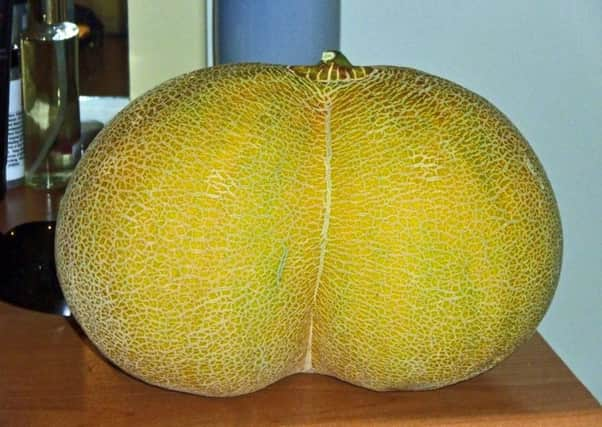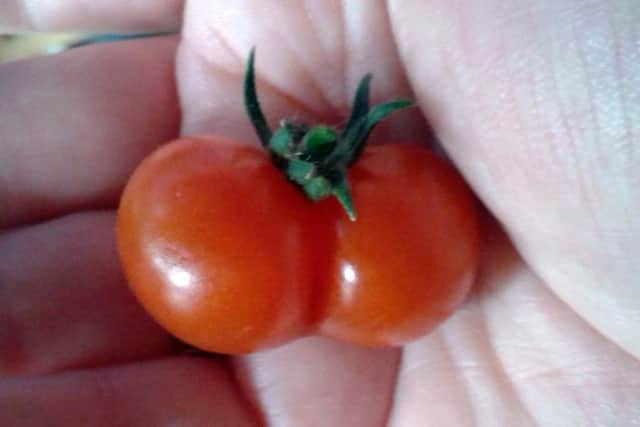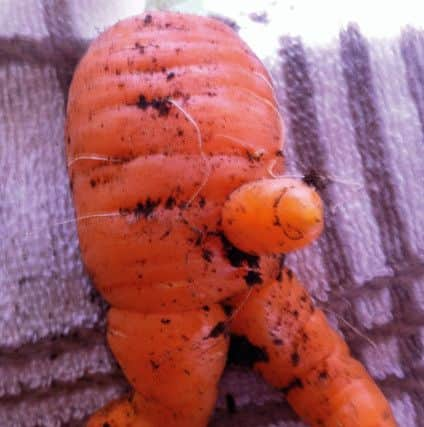GARDENING: £500 prize on offer for '˜vulgar veg'
This article contains affiliate links. We may earn a small commission on items purchased through this article, but that does not affect our editorial judgement.


Following the success of its Vulgar Veg competition last year, Van Meuwen is again giving growers the chance to enter its ‘veg patch misfits’ into a contest to find the UK’s naughtiest-shaped produce.
There’s a prize of £500 worth of Van Meuwen vouchers for the winner of the competition, launched at last month’s Garden Press Event in London.


Advertisement
Hide AdAdvertisement
Hide AdLast year, the firm relaunched chilli pepper Chilli Willy, which caused a sensation at the event, hidden for the sake of decency behind a pair of red boxer shorts!
The competition has a serious point besides the frivolity – encouraging people to buy and eat so-called ‘imperfect’ veg, just because they’re the wrong shape.
Between 20 per cent and 40 per cent of perfectly good but misshapen veg are thrown away in the US alone each year, according to online campaigner Jordan Figueiredo – who runs www.uglyfruitandveg.org – because shoppers have been educated to only buy ‘perfect’ stereotypes.
Van Meuwen spokesperson, Graham Ward, said: “So-called ‘wonky’ or imperfect veg has really caught the attention of the public recently, so we felt compelled to further highlight the interest that has been created by some of the supermarkets with another Van Meuwen Naughty Veg competition.


Advertisement
Hide AdAdvertisement
Hide Ad“They don’t have to have been grown from Van Meuwen seed – and they don’t have to be anatomically correct!”
For seeds and full terms and conditions on the competition, go online and visit www.vanmeuwen.com/competitionsJOBS TO DO THIS WEEKEND
Divide clumps of herbaceous perennials that you want to propagate, those that have become too large for their allotted space, and those that are flowering poorly or have lost their shape. Divide hostas before they come into leaf.
Plant strawberry runners in hanging baskets to grow in the greenhouse for an early summer crop.


Advertisement
Hide AdAdvertisement
Hide AdRe-pot established agapanthus into slightly larger containers. Plant begonia and gloxinia tubers in pots.
Prune out old stems of elder (Sambucus) to promote new growth.
Plant summer-flowering bulbs, such as such as gladioli, tigridia, galtonia, eucomis, anemone, lily and acidanthera. Prepare the soil first, to ensure that drainage is sufficient to prevent the bulbs rotting.
Propagate dahlias from tubers. Pot them up in multi-purpose compost so that the old stalk is just above the surface. Water and place in a warm, light position or in a propagator. Once the fresh shoots have grown to 7.5-10cm (3-4in), cut them off with a knife. Dust the ends with hormone rooting power and push them into a pot containing cuttings compost. Place back in a propagator or plastic bag until roots appear.


Advertisement
Hide AdAdvertisement
Hide AdMulching with a deep layer of organic matter helps to condition the soil, suppress weed growth, insulate plant roots from temperature fluctuations, and conserves soil moisture during summer.
Feed borders with a general-purpose fertiliser, such as Growmore.
Roses will benefit from feeding with a granular rose fertiliser as they come into growth.
Finish pruning established bush and standard roses as they start growing but before any leaves unfurl.
Advertisement
Hide AdAdvertisement
Hide AdMow the grass if the lawn shows signs of growth. Ensure the first cut of the season is light, raising the blades 0.5cm (0.25in) higher than the usual cutting height. Newly-turfed areas can be mown with the blades set to the highest setting, as soon as the grass reaches 5cm (2in) in height.
Mulch raspberries, blueberries, cranberries and lingonberries with well-rotted farmyard manure (not mushroom compost as it is too alkaline).
Untie canes of blackberries and hybrid berries that have been bundled together for winter, and train into arches before the buds burst.
Feed crops that have been standing all winter, such as kale or chard.
Advertisement
Hide AdAdvertisement
Hide AdStart preparing runner bean supports and trenches for sowing (in May) or planting out (in June).
Sow seeds in modules/pots in an unheated greenhouse: broad beans, leeks, lettuce, rocket, coriander, peas and Swiss chard. Sow sweet peppers, tomatoes, chillis, cucumbers, aubergines, celery, salads and globe artichokes in a propagator.
GET IN TOUCH
For more on these topics, plus cook what you grow, traditional recipes, North East information, environmental news and more, log on to www.mandycanudigit.co.com (now smartphone friendly), www.sunderlandecho.com/gardening, follow me on Twitter @MandyCanUDigIt or you can like me on Facebook at Mandycanudigit